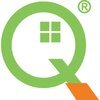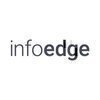Senior Software Engineer Testing
10+ Senior Software Engineer Testing Interview Questions and Answers for Freshers

Asked in QualityKiosk Technologies

Q. What do the status codes 404 and 200 mean in web development?
Status codes 404 and 200 indicate the success or failure of a web request.
200 OK: The request was successful, and the server returned the requested resource.
Example: A user accesses a webpage, and the server responds with the page content.
404 Not Found: The server cannot find the requested resource, indicating it may not exist.
Example: A user tries to access a non-existent page, resulting in a 404 error.

Asked in Coupa Software Inc

Q. How would you write test cases for a microservice that schedules messages?
Test case for a microservice scheduling messages
Verify that messages are scheduled correctly based on specified time
Check if messages are sent to the correct recipients
Ensure that messages are not duplicated or lost during scheduling

Asked in QualityKiosk Technologies

Q. What are classes and objects in object-oriented programming?
Classes are blueprints for creating objects, encapsulating data and behavior in object-oriented programming.
A class defines properties (attributes) and methods (functions) that its objects will have. Example: class Car { int speed; void drive(); }
An object is an instance of a class. Example: Car myCar = new Car();
Classes promote code reusability and organization. Example: class Animal { void eat(); } can be inherited by Dog and Cat classes.
Encapsulation allows classes to hide...read more

Asked in QualityKiosk Technologies

Q. What is the definition of try-catch in programming?
Try-catch is a programming construct used to handle exceptions and errors gracefully during code execution.
Try block: Contains code that may throw an exception.
Catch block: Contains code that handles the exception if it occurs.
Example: try { // risky code } catch (Exception e) { // handle exception }
Multiple catch blocks can be used to handle different types of exceptions.
Finally block: Optional block that executes after try-catch, regardless of whether an exception occurred.

Asked in Ginesys

Q. What is your understanding of APIs (Application Programming Interfaces)?
APIs enable software applications to communicate and interact with each other, facilitating data exchange and functionality integration.
APIs define a set of rules and protocols for building and interacting with software applications.
They can be RESTful (using HTTP requests) or SOAP (using XML-based messaging).
APIs allow different systems to work together, such as a mobile app accessing a web service.
Example: A weather app using an API to fetch real-time weather data from a re...read more

Asked in AKS WebSoft

Q. Why we use aglile node, Advantages and disadvantages
Agile methodology is used for software development to promote flexibility and collaboration.
Advantages of Agile: promotes flexibility, encourages collaboration, allows for quick adaptation to changes
Disadvantages of Agile: can be challenging to implement in large teams, requires constant communication and coordination
Senior Software Engineer Testing Jobs




Asked in AKS WebSoft

Q. What is the difference between test cases and test scenarios?
Test cases are detailed steps to test a specific functionality, while test scenarios are high-level descriptions of a feature to be tested.
Test cases are specific steps to be executed to validate a particular functionality or requirement.
Test scenarios are broader and describe a high-level overview of what needs to be tested.
Test cases are detailed and include input data, expected results, and execution steps.
Test scenarios are more general and may not include specific detail...read more

Asked in QualityKiosk Technologies

Q. What is the difference between JDK, JVM, and JRE?
JDK is the development kit, JRE is the runtime environment, and JVM is the virtual machine for executing Java applications.
JDK (Java Development Kit): A complete toolkit for developing Java applications, including the compiler (javac) and libraries.
JRE (Java Runtime Environment): Provides the libraries and components necessary to run Java applications, but does not include development tools.
JVM (Java Virtual Machine): An abstract machine that enables Java bytecode to be execu...read more
Share interview questions and help millions of jobseekers 🌟


Asked in Okda Solutions

Q. What are the differences between Java and C++?
Java is platform-independent and object-oriented, while C++ is platform-dependent and supports both procedural and object-oriented programming.
Java is platform-independent due to the Java Virtual Machine (JVM), while C++ is platform-dependent and compiled directly to machine code.
Java uses automatic garbage collection, whereas C++ requires manual memory management using 'new' and 'delete'.
Java supports single inheritance, while C++ supports multiple inheritance through classe...read more

Asked in QualityKiosk Technologies

Q. DIFFERENT TYPES OF CLASS : PUBLIC PRIVATE PROTECTED STATIC
Classes in programming define access levels and behaviors: public, private, protected, and static.
Public: Accessible from anywhere. Example: 'public class MyClass {}'
Private: Accessible only within the class. Example: 'private int myVar;'
Protected: Accessible within the class and subclasses. Example: 'protected void myMethod() {}'
Static: Belongs to the class rather than instances. Example: 'static int myStaticVar;'

Asked in QualityKiosk Technologies

Q. What is a hash set in data structures?
A hash set is a data structure that stores unique elements using a hash table for efficient access and retrieval.
Stores unique elements, preventing duplicates.
Uses a hash function to compute an index for each element.
Provides average O(1) time complexity for add, remove, and contains operations.
Example: Inserting elements {1, 2, 3} results in a hash set with unique values.
Commonly used in scenarios requiring fast membership tests.

Asked in Nomura Holdings

Q. What are stacks and queues?
Stacks and queues are abstract data structures that manage collections of elements in specific orders.
Stack: Last In, First Out (LIFO) structure. Example: Undo feature in text editors.
Queue: First In, First Out (FIFO) structure. Example: Print job management in printers.
Stacks use push and pop operations to add and remove elements.
Queues use enqueue and dequeue operations for adding and removing elements.
Both can be implemented using arrays or linked lists.

Asked in Coupa Software Inc

Q. Explain the architecture of your product.
Our product follows a microservices architecture with a combination of front-end, back-end, and database layers.
Utilizes microservices architecture for scalability and flexibility
Front-end layer handles user interface and interactions
Back-end layer manages business logic and data processing
Database layer stores and retrieves data efficiently
Communication between layers is done through APIs

Asked in Capgemini

Q. What are some common Java questions?
This question assesses your understanding of Java fundamentals and problem-solving skills.
Understand Java basics: classes, objects, inheritance, and polymorphism.
Practice coding problems on platforms like LeetCode or HackerRank.
Familiarize yourself with Java testing frameworks like JUnit and TestNG.
Review common design patterns and their implementations in Java.

Asked in Coupa Software Inc

Q. Different type of testing
Different types of testing include unit testing, integration testing, system testing, and acceptance testing.
Unit testing focuses on testing individual components or modules of the software.
Integration testing involves testing how different modules work together.
System testing tests the entire system as a whole.
Acceptance testing is done to ensure the software meets the requirements of the end users.

Asked in Khazana Jewellery

Q. Explain the product.
A product is a tangible or intangible item that is created and offered for sale.
Products can be physical goods, such as electronics or clothing.
Products can also be services, such as software or consulting.
Products are designed to meet a specific need or want of a customer.
Products go through a lifecycle of development, launch, growth, maturity, and decline.

Asked in QualityKiosk Technologies

Q. SQL VS MONGODB
SQL is a structured query language for relational databases, while MongoDB is a NoSQL database for unstructured data.
Data Structure: SQL uses tables with rows and columns, while MongoDB uses collections and documents (JSON-like format). Example: SQL table vs. MongoDB document.
Schema: SQL databases have a fixed schema, requiring predefined structure, whereas MongoDB is schema-less, allowing for flexible data models.
Query Language: SQL uses structured queries (SELECT, INSERT, U...read more
Interview Questions of Similar Designations
Interview Experiences of Popular Companies





Top Interview Questions for Senior Software Engineer Testing Related Skills



Reviews
Interviews
Salaries
Users

















